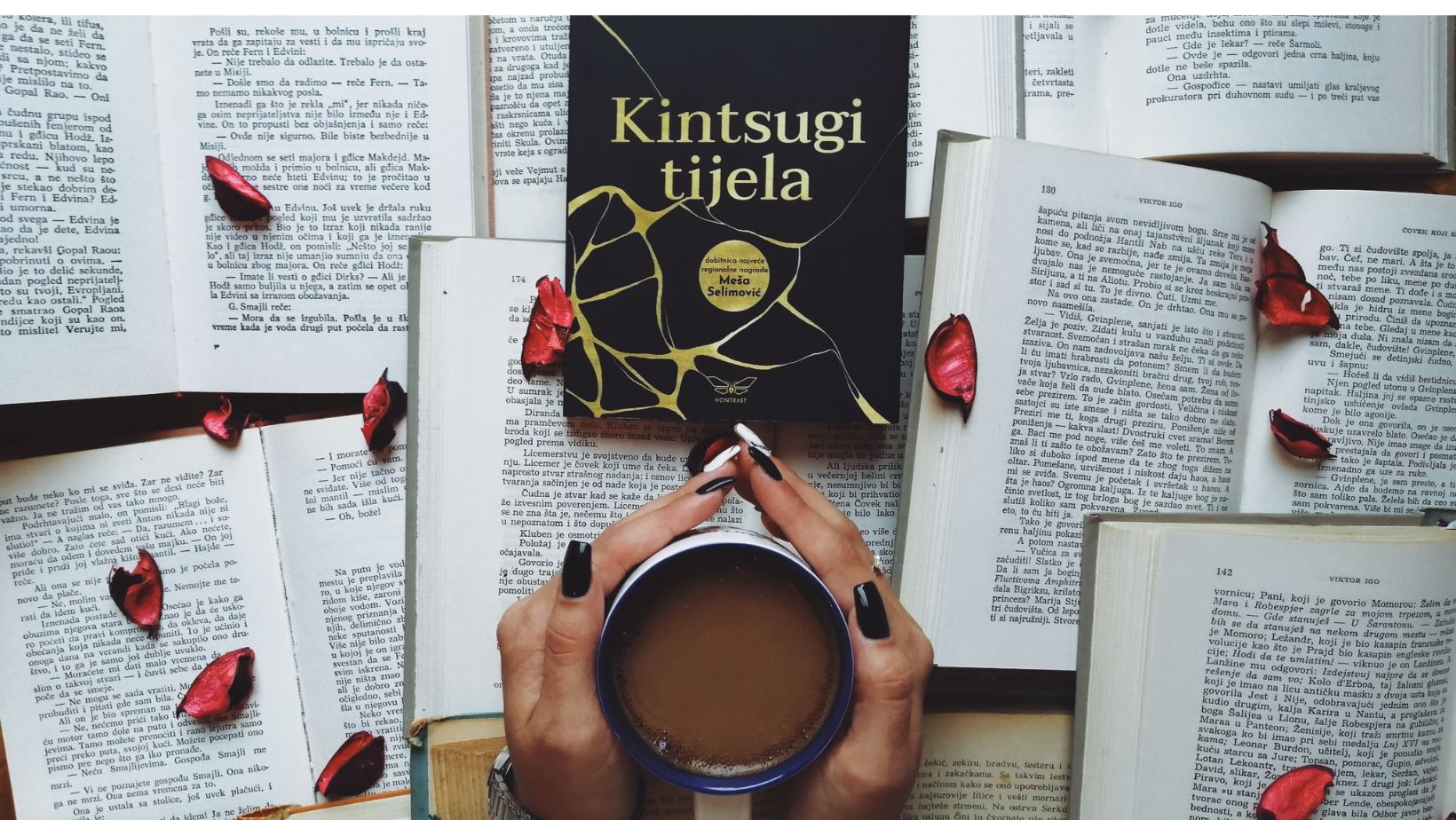
Top 10 Fiction Writing Examples to Inspire Your Creativity and Improve Your Craft
Fiction writing opens up a world of imagination and creativity, allowing us to explore diverse characters and intricate plots. As a writer, I’ve often found inspiration in the works of others, and understanding different styles can help shape my own voice. Whether you’re a seasoned author or just starting out, examining fiction writing examples can spark new ideas and techniques.
From gripping narratives to rich character development, the best examples showcase the art of storytelling. They reveal how to weave emotions and themes seamlessly into a narrative. In this article, I’ll dive into various fiction writing examples that highlight essential elements of the craft, helping you elevate your own writing journey.
Key Takeaways
- Fiction Writing as a Creative Outlet: Fiction writing encourages imaginative exploration, allowing writers to develop diverse characters and intricate plots that reflect various human experiences.
- Importance of Character Development: Strong character development adds depth to stories, making protagonists relatable and enhancing reader engagement through their internal conflicts and growth.
- Understanding Plot Structures: Familiarity with classic plot structures, like the three-act format and hero’s journey, helps writers craft captivating narratives by guiding pacing and emotional impact.
- Narrative Voice Matters: The choice of narrative voice (first-person vs. third-person) significantly influences how stories resonate, affecting reader connection and emotional engagement.
- Utilizing Authentic Dialogue: Realistic dialogue reveals character traits and propels the plot, making interactions believable and keeping readers fully immersed in the story.
- Diverse Forms of Fiction: Exploring different forms of fiction, such as short stories, novels, and flash fiction, can inspire creativity, encourage unique storytelling techniques, and enhance the overall writing process.
Fiction Writing Examples
Fiction writing examples display various techniques and styles that inspire creativity. Each example highlights essential elements, such as character development, plot structure, and narrative voice.
- Character Development
Characters breathe life into a story. Examples include complex protagonists who face moral dilemmas or antagonists whose motivations create tension. Notable authors use vivid descriptions and internal conflicts to enhance relatability. - Plot Structure
Effective plots captivate readers. Many stories follow classic structures, such as the three-act format or the hero’s journey. Authors often manipulate pacing and employ plot twists to maintain engagement throughout their narratives. - Narrative Voice
Narrative voice shapes how a story resonates. Authors may choose first-person perspectives for intimacy or third-person for broader context. Different tones—humorous, somber, or suspenseful—impact reader emotions and comprehension. - Dialogue
Authentic dialogue reveals character traits and progresses the plot. Examples often include subtext, where characters say one thing while implying another. Skillful dialogue creates realism and keeps readers invested in character interactions. - Setting
A well-crafted setting immerses readers in the world of the story. Examples may draw on sensory details to bring environments to life. Descriptions of landscapes, buildings, or eras can enhance mood and support themes.
These fiction writing examples serve as vital resources for developing unique writing styles and enhancing storytelling effectiveness. Exploring various techniques can guide aspiring writers toward honing their craft.
Importance of Fiction Writing
 Fiction writing plays a crucial role in both personal and societal development. It allows for the exploration of complex ideas, emotions, and diverse experiences that reflect the human condition.
Fiction writing plays a crucial role in both personal and societal development. It allows for the exploration of complex ideas, emotions, and diverse experiences that reflect the human condition.
Engaging the Reader
Engaging the reader is essential for effective storytelling. Gripping narratives pull readers into the world I’ve created, allowing for an emotional connection. Creating relatable characters with distinct traits and struggles encourages readers to invest in their journeys. For example, suspenseful plots keep readers turning pages, as unanswered questions create anticipation. Utilizing techniques such as cliffhangers and vivid imagery enables readers to fully immerse themselves in the story.
Developing Creativity
Developing creativity is a significant benefit of fiction writing. It offers an outlet for self-expression and experimentation with different ideas and themes. By delving into various genres and styles, I can push the boundaries of my imagination. Fiction invites me to create unique worlds and diverse characters that provoke thought and inspire empathy. Engaging with different narrative techniques, such as unreliable narrators or non-linear timelines, fosters innovative thinking and enriches my overall writing process.
Types of Fiction Writing Examples
Fiction writing encompasses various forms, each with distinct characteristics. Exploring these types can enrich storytelling techniques and inspire creativity.
Short Stories
Short stories range from 1,000 to 7,500 words, focusing on a single theme or concept. They provide an opportunity for writers to craft a complete narrative in a condensed format. Key elements include a focused plot, well-developed characters, and a pivotal moment or twist. Stories like “The Lottery” by Shirley Jackson exemplify how brevity can amplify impact, leaving a lasting impression on readers.
Novels
Novels, typically exceeding 40,000 words, allow for complex plots and character arcs. Writers can explore multiple themes, settings, and perspectives. Novels such as “To Kill a Mockingbird” by Harper Lee demonstrate the power of depth in storytelling, delving into social issues through rich character development and intricate narratives. The structure often follows arcs like the hero’s journey, enhancing reader engagement through elaborate twists and turns.
Flash Fiction
Flash fiction compresses a complete story into fewer than 1,000 words, often focusing on a specific moment or idea. This form challenges writers to convey meaning and emotion succinctly. Examples, such as those found in literary magazines, showcase how flash fiction can provoke thought and evoke strong feelings despite limited word count. The emphasis lies in economy of language and sharp imagery, making every word count in delivering an impactful narrative.
Analyzing Fiction Writing Techniques
Understanding fiction writing techniques enhances storytelling. By analyzing character development and plot structure, I can identify powerful strategies that elevate narratives.
Character Development
Character development serves as the backbone of any compelling story. Engaging characters often expose internal conflicts, motivations, and emotional depth. I observe authors using techniques like backstories, detailed physical descriptions, and relatable flaws to create multidimensional characters.
For example, in J.K. Rowling’s “Harry Potter” series, Harry exhibits vulnerability and resilience, making him relatable. I’m drawn to characters who evolve throughout the story, as seen in Elizabeth Bennet from Jane Austen’s “Pride and Prejudice.” Her journey from prejudice to understanding showcases effective character arc progression.
Plot Structure
Plot structure organizes narratives, guiding the reader through rising tension and resolution. I notice several common structures, including the three-act format and the hero’s journey. Each serves distinct purposes in pacing and emotional impact.
The three-act structure divides the narrative into setup, confrontation, and resolution. In “The Great Gatsby” by F. Scott Fitzgerald, this structure emphasizes the tension between aspiration and reality. The hero’s journey, utilized in works like J.R.R. Tolkien’s “The Hobbit,” illustrates a protagonist’s transformation through trials and tribulations. This technique captivates readers by revealing universal themes of growth, bravery, and self-discovery.
Resources for Inspiration
Inspiration fuels my writing journey, helping me spark creativity and refine my craft. Here are valuable resources to spark ideas and enhance my fiction writing.
Writing Prompts
Writing prompts ignite my imagination and encourage me to explore new themes or characters. Prompts can stimulate creativity and challenge me to step outside my comfort zone. Here are some examples:
- Unexpected Encounters: Write about two characters meeting under unusual circumstances.
- Alternate Realities: Create a story that unfolds in a world where a single historical event had a different outcome.
- Objects with Stories: Choose an everyday object and narrate its journey from one owner to another, revealing their lives.
These prompts provide fresh perspectives and diverse storylines, enabling me to explore various writing styles.
Classic Literature
Classic literature offers timeless insights into storytelling and character development. Reading works from acclaimed authors broadens my understanding of narrative techniques. Key examples include:
- “Pride and Prejudice” by Jane Austen: Austen’s keen observations on society and relationships emphasize character arcs and dialogue’s role in unfolding emotions.
- “Moby-Dick” by Herman Melville: Melville’s use of an unreliable narrator highlights how narrative voice shapes a reader’s experience.
- “1984” by George Orwell: Orwell’s exploration of dystopian themes illustrates the significance of setting and atmosphere in fiction.
Engaging with classic literature furthers my appreciation for various narrative structures and styles, offering invaluable lessons for my writing.
Fiction writing opens a world of possibilities for creativity and self-expression. By examining diverse examples and techniques I can refine my craft and discover my unique voice. Each story I encounter offers valuable lessons on character depth and plot intricacies that resonate with readers.
As I continue my writing journey I’ll embrace the insights gained from classic and contemporary works. Whether I’m crafting a short story or a sprawling novel the principles of engaging narratives and relatable characters will guide me. I’m excited to explore new themes and push my boundaries as a writer.
